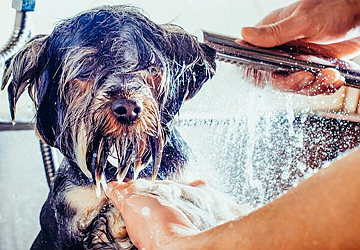Dive into "How To Groom Your Pet At Home: DIY Pet Grooming Made Easy" to unlock the secrets of at-home pet pampering. Explore practical tips and expert advice for a salon-worthy finish without leaving home.
As pet owners, we always aim to give our furry companions the best. Grooming is significant to their well-being, but regular salon visits can sometimes be cumbersome or costly. That's where our guide, "How To Groom Your Pet At Home: DIY Pet Grooming Made Easy," comes into play.
Delve into a comprehensive manual filled with step-by-step instructions, ensuring your pet looks and feels its absolute best, all from the comfort of your home.
As pet owners, there's immense satisfaction in watching our beloved animals flourish. This often ties back to the attention and care we provide. DIY grooming is gaining traction for its convenience and personal touch, ensuring our pets are healthy and comfortable in their skins.
With this guide, you'll be equipped with extensive grooming tips tailored to make the process efficient and safe.
The ambiance plays a pivotal role in at-home grooming. A relaxed pet ensures a smoother grooming process. While procuring quality tools is essential, the environment also matters. Opt for a quiet space, lay out a non-slip mat, and ensure ample lighting.
This minimizes stress for both you and your pet. Moreover, treats can act as positive reinforcements, making the grooming experience enjoyable for your furry friend.
Frequent brushing is about more than just appearances; it's about health. Regular brushing sessions prevent matting, reduce shedding, and stimulate the skin by promoting blood flow. It's an intimate exercise that allows you to check for abnormalities like bumps, fleas, or skin infections. Select the right brush for your pet’s fur type and length.

While many dread it, bath time can be therapeutic with the right approach. Prioritize safety by placing a rubber mat at the base to prevent slipping. For pets anxious about water, consider using toys or slow introduction techniques. Use lukewarm water and a gentle pet grooming shampoo to avoid skin irritations. And always ensure thorough rinsing to avoid residue build-up.
Nails can increase, which may result in pain or even injury. Although the prospect of trimming may be daunting owing to the worry of severing the "quick," it is a skill that can be acquired with patience and practice.
If you are just starting, trim in small increments to avoid making mistakes. This once scary process will eventually become second nature for you and your pet, and what was once an ordeal will become an everyday occurrence.

A pet's ears are vulnerable and can quickly become infected, particularly in breeds with ears that hang loosely. It is recommended to inspect everything once a week. When cleaning, it is essential not to probe too deeply, as doing so can cause damage to the item being cleaned.
In most cases, a simple swipe with a cotton ball soaked in a cleanser acceptable to veterinarians will suffice. Are you noticing anything out of the ordinary? It is essential to seek the advice of a veterinarian.
While fresh breath is a bonus, dental health directly impacts overall pet hygiene and well-being. Periodontal diseases are common and can lead to severe complications if unchecked. Introduce dental hygiene practices early to acclimatize your pet. Apart from brushing, dental chews can help reduce tartar build-up.
After bathing your pet, it is imperative to ensure they are scorched. Because fur retains moisture, it is susceptible to fungal diseases. It is recommended that long-haired dogs have their fur trimmed regularly, particularly in the areas around their eyes, ears, and paws. This is not only about the way it looks; it also has to do with their comfort and their health.
Every single pet is one of a kind. Some may require more frequent grooming sessions, but others may be less demanding of your time. To keep your pet looking and feeling their very best, it is essential to familiarize yourself with their requirements and set a regimen that you stick to regularly.
It's essential to remember that not all pets get used to being groomed at home right away. The owners and their pets will have to undergo a period of adjustment. Keeping a fantastic temperament, providing tasty rewards, and taking frequent breaks can go a long way toward resolving a conflict.
Do-it-yourself projects do not preclude the use of professionals. There are instances when the skills of a groomer are necessary, particularly for activities such as clipping the fur of particular breeds of dogs or treating specific skin disorders.
Your attitude and demeanor during DIY grooming sessions significantly influence your pet's experience. Animals, especially pets, are adept at picking up human emotions. If you're anxious, stressed, or impatient, your pet will sense it, making them more likely to be restless or anxious themselves. Always approach grooming with a calm mindset. Play soft music or engage in soothing conversation with your pet. Over time, your pet might even start looking forward to these sessions.
DIY grooming is not a mere cost-saving exercise. It's about strengthening the bond with your pet, understanding their needs, and ensuring they remain in prime health. Through this comprehensive guide on "How To Groom Your Pet At Home: DIY Pet Grooming Made Easy," you're now equipped with the knowledge and grooming tips to provide top-tier care. Your pet’s radiant coat and buoyant spirit will testify to the love and care you invest.